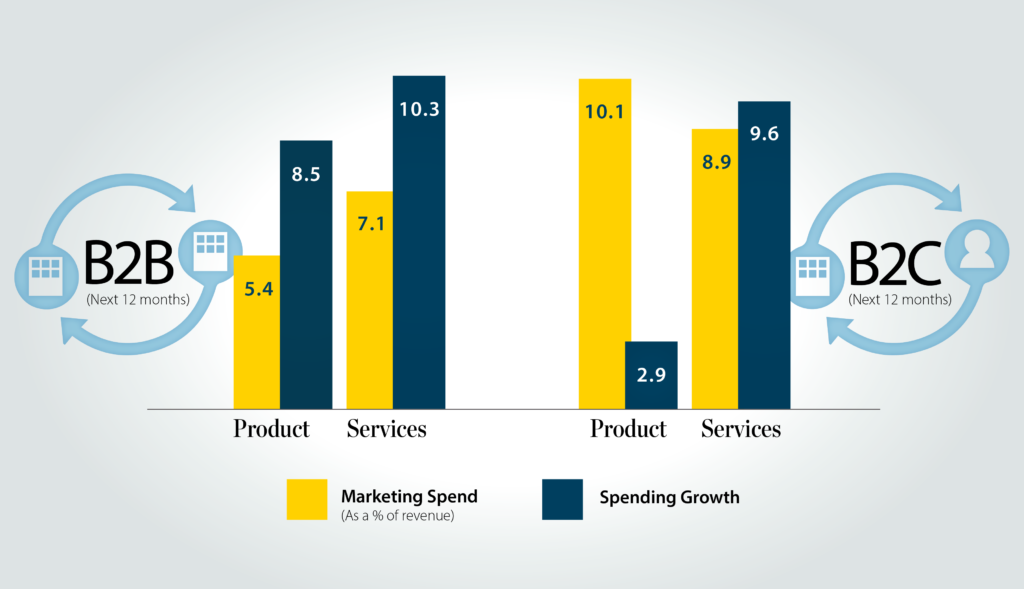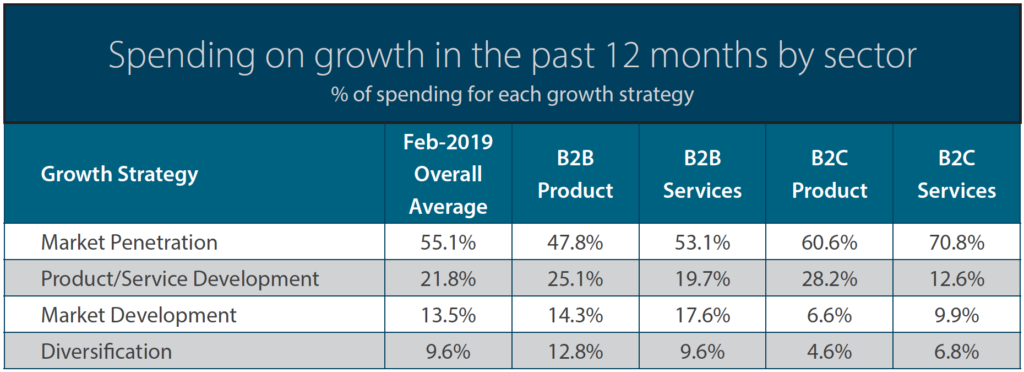5 marketing spend trends to act on now

Marketing as a profession is undergoing a seismic shift.
Marketers are under mounting pressure from C-suites to deliver measurable results. By all accounts, companies are spending more on marketing and leveraging a dizzying array of digital assets. They are also struggling to develop relevant media in an environment saturated by an endless stream of content.
In e-commerce, for example, the average conversion rate is about 2% according to WordStream. There is a similar lack of engagement in business-to-business (B2B) marketing, where your garden variety newsletter garners a 3% click-through rate.
In the face of extraordinary change and competition, companies are reprioritizing their spending. According to the February 2019 CMO Survey conducted by Duke University, American Marketing Association and Deloitte, marketing spending will increase 5% this year. Digital advertising is growing at a 12% clip, while traditional advertising has declined at an average rate of -2% over the last five years.
As the survey is of “chief marketing officers,” it is assumed that their marketing spend may be higher than that of the average company. However, we leverage this data as an excellent source for benchmarking. Spending is also skewed by channel, with non-internet-related businesses spending 6.2% of revenue on marketing. Smaller companies spend more as a percentage of revenue than larger ones (those with less than $25 million in revenue spend about 10%).
CMO Survey Projections for 2019

The increase in marketing spend is higher for B2B companies than that of business-to-consumer (B2C) companies. This reflects a maturation of B2B marketing, and a new generation of technologies that are perceived to drive greater return on marketing investment (ROMI). Several years after the adoption of cloud computing, products are now available that offer marketers and salespeople more choices.
Companies are hunkering down and investing more in their existing markets (market penetration). Spending on
market development and product development are down about 1% from August.

Top 5 marketing spend trends
Companies are spending more freely on marketing but are also trying to find their way in terms of return. Keep in mind these 5 trends when planning your 2019 marketing budget.
1. The rise of marketing automation
Marketing automation is a hot category as companies flock to providers who can enable better targeting of clients based on size, geography or product preferences. In a recent Vistage Research Center survey, customer relationship management (CRM) software was the one technology most likely to be implemented by members in 2019.
The CMO Survey predicts CRM spending will rise 9% this year (three times the pace of GNP growth). This is because new cloud technologies are more powerful, easier to configure and less costly to implement than in the past.
2. Tackling product management challenges
Product management, which may include services for some members, is a pain point. Most members surveyed lack dedicated product development teams, and product management often falls on marketing teams who are resource-constrained. The importance of successful product launches and managing product life cycles is becoming clearer.
For example, in companies without a robust product development process, there may be no one responsible for retiring or grandfathering aging products and categories. Without a clear SKU rationalization process, companies carry too many poorly-performing products and too much inventory.
3. Prioritizing the customer journey
As Vistage member and agency CEO Jessica Hawthorne-Castro points out in a recent Forbes column, marketers are focusing more on customer journey as they isolate opportunities to provide new services and amplify needs. Providers will have to pivot in real time based on changing customer preferences.
Artificial intelligence will enable companies to test various marketing approaches to facilitate improved ROMI. A/B testing is common in ecommerce today, as companies test price points, promotions and language to see what resonates most with customers. Larger companies are twice as likely to invest in artificial intelligence for their marketing efforts than smaller ones. They are using AI to personalize content and develop predictive analytics.
4. Video nabs more budget
Video also continues its blistering rise, with spending up over 30% in 2018 (with social media expected to rise 73% in five years). Video now consumes roughly one-in-four marketing dollars. B2B companies in particular are finding ways to embed more client testimonials, how-to videos and how-we-work campaigns in an effort to speak to younger consumers. It’s estimated that more than half of today’s professional procurement people are millennials.
5. Talent tops concerns
Having the right talent is the top concern of marketing professionals today (34%), highlighting the level of specialization required to manage a contemporary marketing function. Companies continue to cobble together teams (insourced and outsourced) to maintain competency in branding, marketing, web, social media and search engine optimization.
Related content
Category: Marketing
Tags: digital marketing, marketing automation, marketing plans

